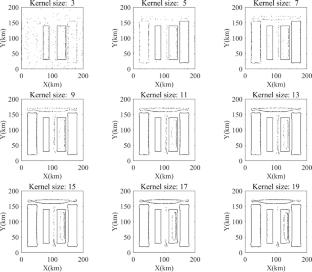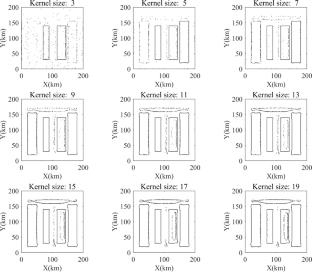Source Edge Detection for Potential Field Data Based on the Laplacian of Gaussian Filter, a Study for Copper-Bearing Targeting at the Kalatag Area in NW China
Abstract
Source edge detection is a crucial task in the analysis and interpretation of potential field data. This paper introduces a novel multi-scale edge detector for potential field data, employing the Laplacian of Gaussian filter. The proposed method was tested on synthetic models and high-precision aeromagnetic data from the Kalatag region in the eastern Tian Shan, NW China. We compared the results with popular edge detection techniques developed by other scholars. Our findings demonstrate that the new detector is able to accurately define the edges of field source bodies, even those characterized by subtle physical differences or larger burial depths. Furthermore, the method exhibits high accuracy in the presence of random noise interference and is adept at identifying field source edges with weak anomalies that may be overlooked by other techniques. The edge identification results of the Kalatag area reveal that the Cu-dominant deposits and mineralization are controlled by two major deep regional faults oriented in the NW-NWW direction. These faults may serve as conduits for Paleozoic magma emplacement or eruption. The borders of magmatic rocks and the intersections of these deep regional faults hold greater potential for mineralization. Overall, this study enhances our understanding of subsurface sources and provides a crucial geophysical foundation for further exploration efforts in the Kalatag area.



 求助内容:
求助内容: 应助结果提醒方式:
应助结果提醒方式:


